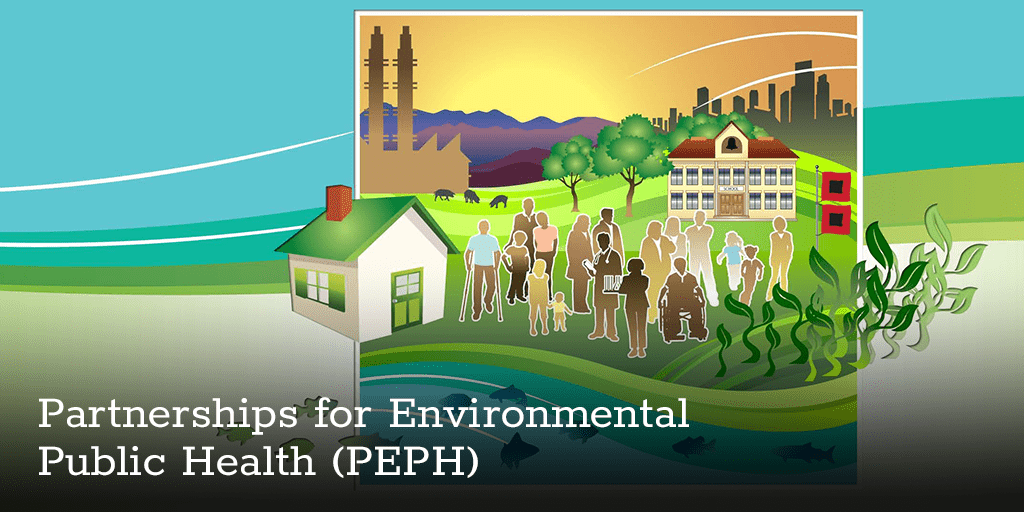Community Engagement Informs Action Plan to Address Air Pollution From Metal Recycling Facilities
Community members, community leaders, metal recycling facility employees, and academic researchers partnered to develop a public health action plan to address residents’ concerns about metal recycling facilities in and near several low-income communities of color in Houston. Because of this work, metal recycling facilities modified their practices to reduce pollution and created new resources to improve communication between facility management and the residents affected by the facilities.
An April 2020 paper highlighted the research teams’ partnership building process. The feature described how the team — composed of academics, Houston Health Department officials, and members of a local environmental justice advocacy group — worked with metal recyclers and community members to respond to community concerns about pollution from the metal recycling facilities. While there are more than 150 metal recycling facilities in Houston, the study focused on those near the low-income neighborhoods engaged in the study. The partners established the Metal Air Pollution Partnership Solutions (MAPPS) study, a community-based participatory research project to address concerns about air pollution. This unique partnership created a community advisory board (CAB) that engaged all parties involved, including members of the metal recycling industry.
Since 2020, the team has observed the benefits of a co-developed public health action plan. In a June 2023 paper, the team describes their collaborative effort to develop a public health action plan, which has been used to sustainably address community concerns.
Residents attend a community a MAPPS forum. (Photo courtesy of Elaine Symanski)
`
New Healthy People 2030 Infographics on Social Determinants of Health
The Office of Disease Prevention and Health Promotion’s Healthy People 2030 initiative released infographics in May on five topics related to social determinants of health (SDOH):
Each infographic represents a literature summary from one of Healthy People 2030’s five SDOH domains: economic stability, education access and quality, health care access and quality, neighborhood and built environment, and social and community context. For example, the infographic on food access highlights how the availability of healthy food, food cost, transportation, and community programs influence a person’s access to healthy, safe, affordable food. The corresponding literature summary goes into more detail, describing negative health outcomes, such as obesity and diabetes, that may result from a lack of access to healthy foods and how the food environment surrounding a school may affect children. A literature summary on environmental conditions includes information on water and air quality, weather and climate change, and strategies for improvements, although there is not yet a corresponding infographic. Healthy People 2030 is a U.S. federal initiative that sets data-driven objectives to improve the nation’s health and well-being.
Waste Management Facility Near Environmental Justice Community Denied Permission to Continue Open Burn Operations
In June, the Louisiana Department of Environmental Quality (LDEQ) made a final decision on a waste management facility’s permit renewal, denying Clean Harbors Colfax the ability to continue its open burn and open detonation operations. The decision came after a public comment period and community efforts to document pollution levels from the facility, including a collaboration with NIEHS-funded researchers to gather data from nearby residents about how pollution from the facility was affecting their lives. Residents of Colfax, a rural community within a few miles of the facility, reported respiratory problems, skin problems, home damage, and other health concerns. A May 2022 paper describes how the team found that the spread of contaminants from the burn facility overlapped with residents’ health concerns.
New Issue Brief on Achieving Environmental Health Equity
The American Public Health Association’s Environmental Health & Equity Collaborative, with funding from the U.S. Centers for Disease Control and Prevention (CDC), published an issue brief on health disparities and their causes in spring 2023. The issue brief emphasizes the importance of public health organizations taking action toward health equity if they want to provide effective environmental health services. The publication describes the need for public health action, including in environmental justice, and lists opportunities for action for public health organizations. The opportunities are grouped according to the CDC’s 10 Essential Public Health Services. For example, within the essential public health service of addressing health problems affecting the population, there are calls to action to meet with, listen to, and work with and for communities affected by environmental injustice and to integrate environmental justice criteria into funding requirements. Other calls to action include engaging in environmental public health workforce development and developing environmental health metrics in partnership with communities. You can read a one-page version of the opportunities for public health action. The Environmental Health & Equity Collaborative promotes environmental health by sharing resources on topics such as climate, environmental health awareness and communication, and the environmental health workforce.
U.S. Environmental Protection Agency to Form National Environmental Youth Advisory Council
The U.S. Environmental Protection Agency (EPA) will establish a National Environmental Youth Advisory Council, which will provide advice and recommendations to the agency on how to improve efforts around environmental issues, such as climate change, as they affect youth communities. The council will help ensure the inclusion of youth perspectives in EPA’s decision-making as the agency works toward ensuring people in the U.S. have access to clean air, safe water, and healthy land. Applications are due August 22, and applicants must be between 16 and 29 years old on that date. At least half of the 16 council members will come from, reside in, or do most of their work in disadvantaged communities. For more information on how to apply or nominate someone, see the “How to Apply” section of the National Environmental Youth Advisory Council webpage. Additionally, EPA will host a webinar regarding applications on August 7. Registration is available.
Source link
www.niehs.nih.gov


